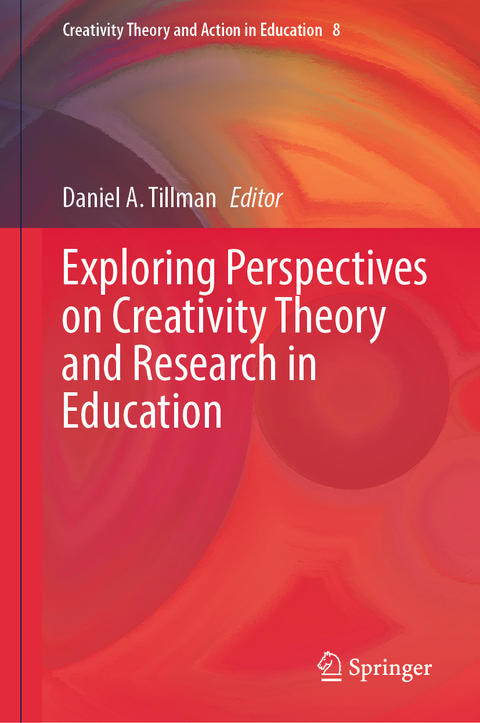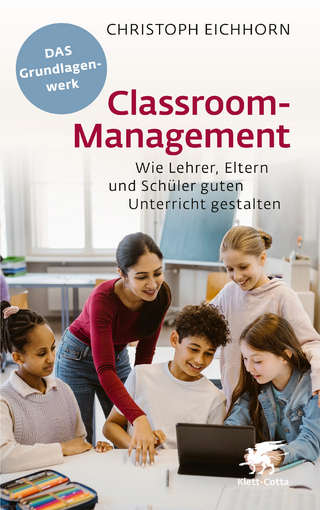
Exploring Perspectives on Creativity Theory and Research in Education
Springer International Publishing (Verlag)
978-3-031-55415-5 (ISBN)
Collectively, the sixteen chapters in this book investigate the power of creativity in the classroom, many through the specific lens of limited resources as an opportunity. The chapters are divided into two sections, eight chapters comprising Section I: Theory and Research and then the eight chapters comprising Section II: Additional Perspectives and Future Directions. Within these two sections, the more than two-dozen authors that contributed to this book tackle a wide range of the possibilities for designing creative classroom-based instruction wherein limited resources are highlighted and valued, rather than avoided or lamented. The two main sections of this book are each preceded by a brief introductory summary highlighting those sections' attributes and objectives, with the intention of providing helpful structure to the reader-but the book has also been designed such that each chapter stands independently and can be jumped to directly like a handbook. In its totality, this book exploring perspectives on creativity theory and research in education is designed to serve as a valuable resource for teachers, teacher educators, school administrators, parents, and education researchers, along with anyone else that is interested in optimizing our opportunities for nurturing creativity within classrooms.
Daniel A. Tillman is an Associate Professor in Educational Technology at The University of Texas at El Paso (UTEP). His current research and teaching focuses on the diffusion of technology innovations into K-12 education, and the use of Augmented Reality (AR) to support teaching and learning. Dr. Tillman received his doctoral degree in Instructional Technology from The University of Virginia (UVA) in 2012, and since then has taught both graduate and undergraduate courses on educational technology. Prior to completing UVA's Ph.D. program, he directed and edited educational documentary movies for almost ten years.
Section I: Theory and Research.- Chapter 1: Repurposing as a Creative Teaching Approach .- Chapter 2: The Precarious Balance Between Autonomy and Constraints that Encourages Creativity.- Chapter 3: Use of Learning Analytics to Support Creative STEAM Education in Primary Schools.- Chapter 4: Imagine and Play with the Possibilities: Improv Prototyping within Constraints.- Chapter 5: The Game Plan: How to Design a Curricular Game Within Limits.- Chapter 6: Gestalt Theory in Relation to Creativity with Limitations.- Section II: Practice and Application.- Chapter 7: Creative Action Science Using Extreme Sports.- Chapter 8: Contextualizing Green Architecture in the Math Class.- Chapter 9: Creative Social Studies Education: How to Nurture Thoughtful Explorers.- Chapter 10: Design Under Constraints: Creative Engineering Education in China.- Chapter 11: Creativity and the Inquiry Design Model.- Chapter 12: Biotechnologies that Encourage Creativity.- Section III: Future Directions.- Chapter 13: Space Science Engagement through Low Cost Technology Implementations with NASA Resources.- Chapter 14: Navajo Educational Experiences.- Chapter 15: Studying Creativity within Educational Makerspaces: A Tri-Modal Analysis.- Chapter 16: Creative Medical Simulations.- Chapter 17: The IConIC Model for Integrated Constraints in Creativity.- Chapter 18: K-12 Digital Storytelling: Crafting Collaboration.- Chapter 19: Concluding Concepts for Optimizing Creative Constraints.
| Erscheinungsdatum | 17.04.2024 |
|---|---|
| Reihe/Serie | Creativity Theory and Action in Education |
| Zusatzinfo | IX, 303 p. 68 illus. |
| Verlagsort | Cham |
| Sprache | englisch |
| Maße | 155 x 235 mm |
| Themenwelt | Sozialwissenschaften ► Pädagogik ► Schulpädagogik / Grundschule |
| Schlagworte | Autonomy and Creative Constraint • Creative Constraints in Education • Creative Education and Technology • Creative Engineering Education • Creative Repurposing in Education • Creative Social Studies Education • Creative STEAM Education • Creative Teaching Approach • Creativity and Gestalt Theory • Creativity and the Inquiry Design Model • Designing Curricular Games with limits • Empirical Studies of Creativity in Classrooms • Encouraging Student Creativity • Innovative STEAM Pedagogy • Integrating STEM with the Arts • Optimizing Creative Constraints • Optimizing Limited Resources |
| ISBN-10 | 3-031-55415-9 / 3031554159 |
| ISBN-13 | 978-3-031-55415-5 / 9783031554155 |
| Zustand | Neuware |
| Haben Sie eine Frage zum Produkt? |
aus dem Bereich


